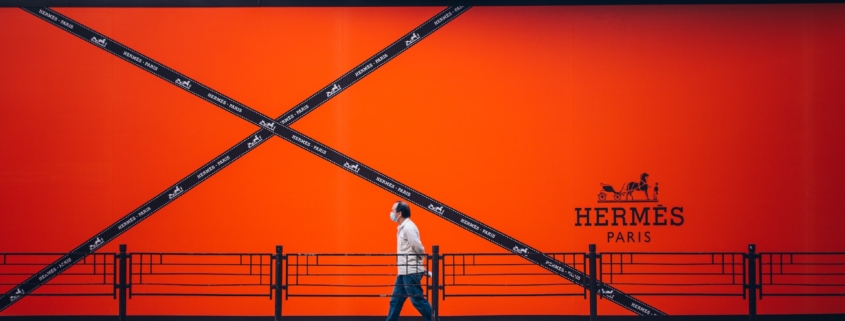The Hermès-NFT Trademark Suit Did Not Change Brand Legality
There is no legal definition of a brand. This is a marketing sin.
Maybe you think the issue of brand legality is not relevant for your marketing efforts. Or, maybe you think that new legal cases testing the limits of trademark law in a techno-digital world are for Intellectual property lawyers, theorists or academicians.
The digital world is challenging the limits of established law. Brand owners should start considering how to protect their brands in this emerging universe.
About a week ago, there was a groundswell of interest in brand, trademark and the possibility that new legal statutes might come into play. Perhaps, even a legal definition of a brand. And, things could have changed. There was a possibility that the Hermès-NFT trademark case could be a catalyst for the legal system to finally generate a legal definition of a brand. The case was a win for established trademark law. Nothing wrong with this. Trademarks must be protected.
But, nothing groundbreaking on the brand front. More than ever, with the power of digital and the pull of the metaverse, brands should not continue to be unprotected.
There are several other trademark lawsuits regarding the creation of NFTs that use well-known brands as part of their art. But, with the ruling in the Hermès-NFT trademark case, the glimmer of hope of a legal definition for a brand will probably turn into a ghost.
One of these unsettled cases is from Nike, a powerhouse brand. Nike filed a trademark infringement lawsuit against StockX. Nike’s complaint states that StockX sold almost 500 Nike brand athletic shoe NFTs. And, these NFTs were sold at exorbitant prices with “murky terms of purchase and ownership.”
Another test will be the suit brought by Jack Daniels against VIP Products. In this trial, the issue is not a digital one. Rather it focuses on a squeaky dog toy that too closely resembles a bottle of Jack Daniels Bourbon.
Film director, Quentin Tarantino, settled a lawsuit with Miramax last September. The case dealt with the auction of “uncut screenplay scenes” from Pulp Fiction (Tarantino’s 1994 film) as NFTs. Mr. Tarantino along with partner Secret Network, wanted to sell NFTs of Mr. Tarantino’s original Pulp Fiction handwritten script. Miramax, which owns the rights to the film, claimed Mr. Tarantino violated copyright law.
But, the blockbuster lawsuit was the recent Hermès versus Mason Rothschild face-off. Mr. Rothschild is an artist. He created digital images of 100 “MetaBirkins” as NFTs. These NFTs are imaginary fur-covered handbags à la the iconic Hermès Birkin handbag. As an artist, Mr. Rothschild’s position is one of artistic expression which is protected by the First Amendment. His lawyers describe the MetaBirkins as two-dimensional works, which are, by virtue of being a “picture,” not three-dimensional handbags for use in the metaverse or in real life. Yet, a buyer could hang one of these MetaBirkin NFTs on a wall in a digital space.
Observers, IP lawyers, artists and others connected to NFTs watched this case very carefully. This is because the relevance and power of trademark law is based on “real world” situations. The digital world is different. The question was and still is: how does trademark law work in the metaverse?
But, importantly, there is another issues that no one mentions. The metaverse is an experiential universe. In an experiential universe, experiences matter. Brands are promises of relevant differentiated experiences. A brand experience is unprotected in law. Anyone can attempt to copy that experience as long as someone’s trademark is not used.
It is necessary at this point to state five critical ideas.
First, here is the definition of a trademark. A trademark is any word, name, symbol, or design, or any combination thereof, used in commerce to identify and distinguish the goods of one manufacturer or seller from those of another and to indicate the source of the goods.
A trademark identifies the source of a product or service.
In the Hermès-NFT case, Hermès is the source of the Birkin Bag. People might think the Rothschild MetaBirkin bag comes from Hermès. And, therefore, the perception might be that the MetaBirkin Bag has the authenticity and provenance of Hermès.
Second, there is no legal definition of a brand, so here is one: a brand is any distinctive identity distinguishes a specific PROMISE associated with a specific product or service, differentiating that product or service from others in the marketplace. A brand defines a relevant, differentiated experience.
The concept of brand is not in the law books. The legal cases in which brands play a role are all about trademark infringement and trademark dilution. Hermès is proceeding with trademark infringement in court.
Third, you trademark products. You brand promises. You brand the promise associated with the product. This means that the promised experience is not protected because a brand is not a legal entity. Keep in mind that a lot of what a Hermès’ Birkin Bag delivers is experiential. Right now, the Hermès’ Birkin Bag experience is not able to be legally protected. Only the trademark can be protected.
Fourth, trademark dilution is not brand dilution. Trademark infringement is not brand infringement. With trademark dilution and trademark infringement, the source is protected; the experience is not. Trademark dilution is the perceived lessening of the trademark’s uniqueness. Trademark dilution means that there has been unauthorized use of a famous trademark by a third party.
Fifth, Trademark dilution differs from trademark infringement in that the trademark owner does not need to prove a likelihood of confusion to protect the trademark. Instead, all that is required is that use of a “famous” mark by a third party causes the dilution of the “distinctive quality” of the mark.
With trademark infringement, the trademark owner must show that it has a valid and legally protectable trademark; that it owns that trademark; and that the offender’s use of the trademark likely caused confusion.
In the Hermès case, Mr. Rothschild created and sold NFTs displaying images of Hermès’ iconic Birkin bag. Hermès successfully argued that Mr. Rothschild’s MetaBirkin NFTs are a case of trademark infringement in that customers could be confused as to the source of the MetaBirkin. Mr. Rothschild believes that people willing to spend five figures for a satchel would not be confused by his artwork.
Hermès believes, as did the jury, that Mr. Rothschild’s NFTs “… may have caused clients to believe that the premium brand (Hermès) is affiliated with his artwork.”
The jury determined that NFTs are less artwork and more consumer product. Therefore, as consumer product, the NFTs are subject to copyright law protection from copycats. The jury also decided that there was consumer confusion, as Mr. Rothschild’s website URL was too similar to the Hermès website. Hermès did provide market research indicating there had been some confusion. Mr. Rothschild’s legal team stated that the data were sketchy and the confusion was “minor.”
Intellectual Property lawyers and creators eagerly followed this case. Going in, many believed that there could be some rulings that might better direct how trademarks, art and trademark law will operate in the digital world. Pre-verdict, one law professor indicated that there is a strong possibility that for “game-changing” rulings. Another lawyer indicated that digital assets are “revolutionary” requiring new “legal options” with the acceptance of “NFT owners as copyright owners.” Yet another IP lawyer wrote that the Hermès-MetaBirkins case will be a “momentous turning point for Web3 and digital products.”
As it turned out, established intellectual property law won out. Or as one of Mr. Rothschild’s lawyers stated, it was “… a great day for big brands and a terrible day for artists and the First Amendment.”
All of this legal wrangling is good for trademark protection. But, what about brand protection? Hermès may have won over Mr. Rothschild for trademark infringement. But, its total brand experience still remains unprotected. And, in the metaverse, experience is everything. So, Hermès and the other brands that are cracking down on use of their logos in digital contexts will still own brands that are at risk. Creators may find that although the trademark cannot be used, the brand experience can be digitally replicated without infringing on a trademark.
Brands must be able to legally own and protect the value they create. This Hermès case demonstrates that now is the time to create and institute a legal definition of a brand.









